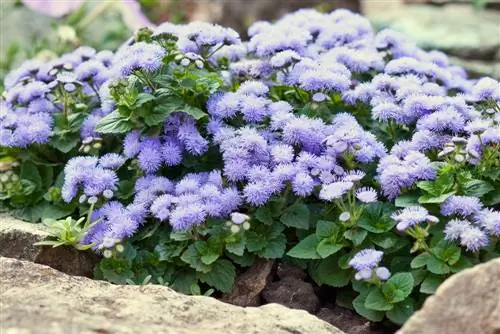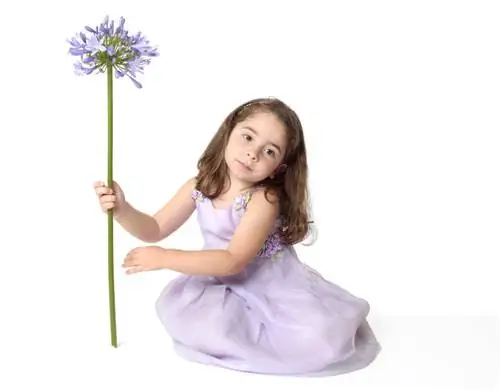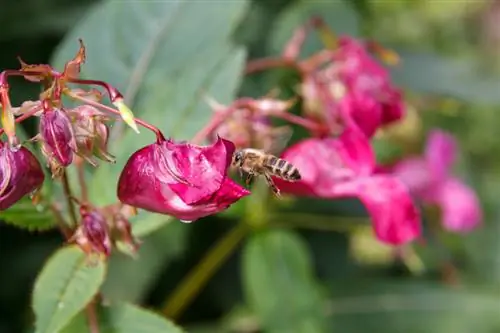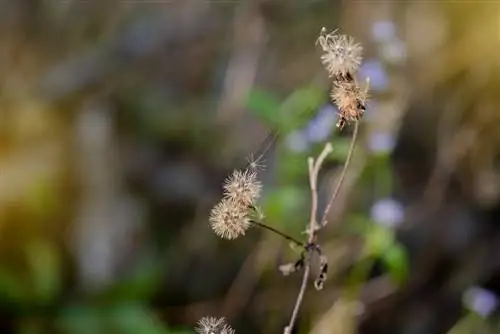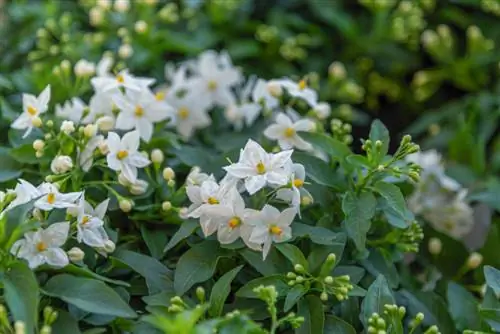- Author admin [email protected].
- Public 2023-12-16 16:46.
- Last modified 2025-01-23 11:21.
Although liver balm with its white, blue or purple flowers is attractive and easy to care for, it is still not particularly suitable for a garden where children play. Unfortunately, Ageratum houstonianum, its botanical name, is poisonous.
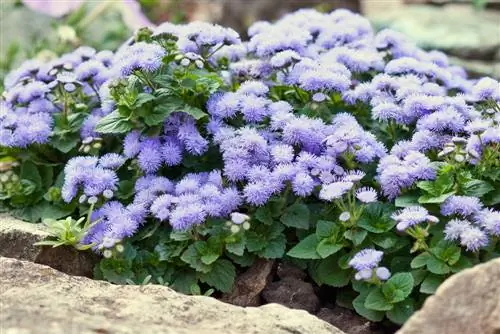
Is liver balm poisonous?
Liver balm (Ageratum houstonianum) is poisonous to humans and animals. All parts of plants, including leaves, stems, roots and flowers, contain toxins. Therefore it is not recommended for family gardens with children and pets.
This toxicity applies to all parts of the liver balm, i.e. leaves, stems, roots and flowers. Liver balm can also pose a danger to your pets if they nibble on the plant. However, you can also take advantage of a property of the leaves. They contain a hormone that makes larvae that eat them infertile. This is how you inhibit the reproduction of these pests.
The most important things in brief:
- poisonous, also for animals
- all parts of the plant
- Leaf feeding leads to infertility in larvae
- not suitable for family gardens
Tip
Due to its toxicity, liver balm is not suitable for the family garden, but is suitable for combating some pests in the perennial garden.

